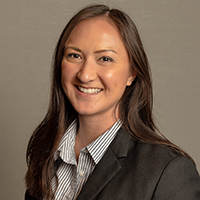
How Technology Broke the Brokered Deposit Rule
Banks could
receive a much-needed update to an outdated regulation that has ensnared an important
source of funding: brokered deposits.
For years, banks
have grappled with the ways that technology has changed financial products,
delivery channels and customer relationships. What hadn’t kept up were the
rules and regulations governing the classification of deposits that involve a
third party. That could change following a proposal from the Federal Deposit
Insurance Corp. to update the brokered deposit regulations.
The FDIC first gave notice in late 2018 that it may change the rule, but prioritized rulemaking around the national deposit rate cap. In response to the initial notice, multiple banks submitted comment letters concerning both proposals. But in December 2019, Chairman Jelena McWilliams outlined four goals of the standard’s update and released an advanced notice of proposed rulemaking.
The proposal
seeks to create a framework that “encourages innovation within the industry,
and allows banks to serve customers the way customers want to be served,”
McWilliams said in December, adding that the FDIC will clarify the types of
existing partnerships that “generally would not result in a brokered deposit”
classification while still minimizing risk to the insurance fund.
The Evolution of Brokered Deposits
For decades, brokered deposits meant brokered certificates of deposits. Because of their sensitivity to interest rates, as well as their susceptibility to flight in the event of trouble, Congress created restrictions in 1989 governing their use by institutions that are less than well capitalized. Key to this was the FDIC’s definition of brokers as third parties that facilitated the placement of deposits at banks.
Today, brokered deposits can be accepted at well-capitalized institutions without restriction, but banks may shy away from their use, and the designation still matters, says David Freeman, a partner at Arnold Porter. Brokered deposits are disclosed on a bank’s call report and their concentration can impact a bank’s core deposit ratio and increase its deposit insurance assessment.
In the intervening years, the FDIC’s rules have proven to
be open to interpretation, particularly when it comes to determining who is considered
a deposit broker and what deposits qualify as brokered. The FDIC created nine
exceptions to a deposit broker, though those too have been a subject of dispute.
Further complicating things have been the way that technology and the internet have
facilitated the creation of new deposit products and delivery channels.
“In the 1980s, businesses communicated through phones and
fax machines, and bank customers typically deposited money and accessed banking
services by walking into a local bank branch,” McWilliams said. “Since then,
the emergence of the internet and other technological innovations has
fundamentally changed how banks interact with their customers.”
The Issue at the Core
Over time, some brokered funds have demonstrated attributes that are more commonly found in core deposits. This evolution has impacted clients of John Popeo, a principal at bank consultancy The Gallatin Group, who were “up in arms” over the potential classification because they felt that the deposits weren’t brokered in the traditional, historical sense.
“I had financial technology companies and banks calling
me a few years ago [who] said, ‘Well, the deposit shouldn’t be classified as
brokered,’” he says. “But under the rule as it was written at the time, and as
it is still in existence, those deposits were brokered.”
Consumers now can open health savings accounts, sweep accounts and accounts with third-party fintech apps, all which could be classified as brokered. The rules only address how a deposit came into a bank, rather than whether it behaves like a core deposit or “hot money,” giving rise to conflict and confusion in the industry.
“It’s an onion: The more you look into it, the more you
want to cry because the complexity is so mind boggling,” says Aaron Klein, a fellow in economic studies at
the Brookings Institute and policy director at the Center on Regulation and
Markets. He argues that the mechanism by which a deposit comes into the bank is
of less interest than how the deposit behaves once it is in the bank.
Banks and
fintechs argue that so much has changed in 30 years that only a subset of
brokered deposits should be considered “hot.” If that’s true, Klein says, “then
all brokered deposits shouldn’t be treated the same.”
What Could Change
Dozens of banks submitted letters to the FDIC in the first half of 2019 during the initial comment period, and others may have another opportunity to do so now that the agency has outlined its proposed changes. McWilliams’ speech shows that FDIC is taking a “more thoughtful” approach when considering how technology has changed the banking landscape, says Popeo, especially when it comes to being designated as a broker. A rule update could make community banks more willing to accept deposits and enter partnerships they would otherwise be wary of, he says. It could also help solidify the business models of certain fintechs.
Of course, the
proposal to change the rule is not universally embraced. FDIC board member
Martin Gruenberg, for one, voted against it at the agency’s December meeting.
“This proposed rule will likely reduce dramatically the scope of deposits that are currently considered brokered without adequate justification and expose the banking system to significantly increased risk,” he said in a statement.
Still,
Freeman thinks the FDIC’s latest proposal has shortcomings and may end up broadening
the definition of brokered deposit. “It’s
going to pick up potentially a lot more deposits as being brokered, if you think
of all the things that touch a deposit,” he says.
Freeman also
highlighted that the proposal is missing an overarching objective or statement
of purpose to inform future interpretations of an amended regulation.
“You really have to wonder what it is the FDIC is
trying to accomplish with this rule at this point,” he says. “They say they’re
trying to update it, but there’s no real discussion of … how this is intended
to protect bank stability or benefit consumers.”



